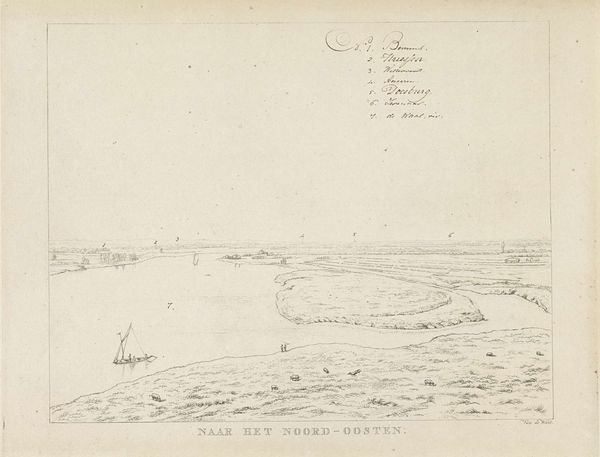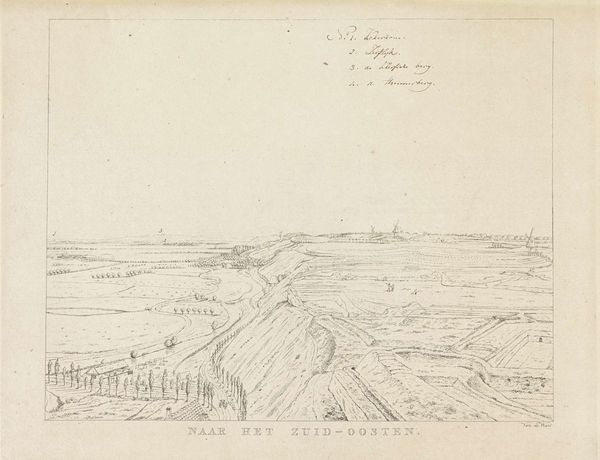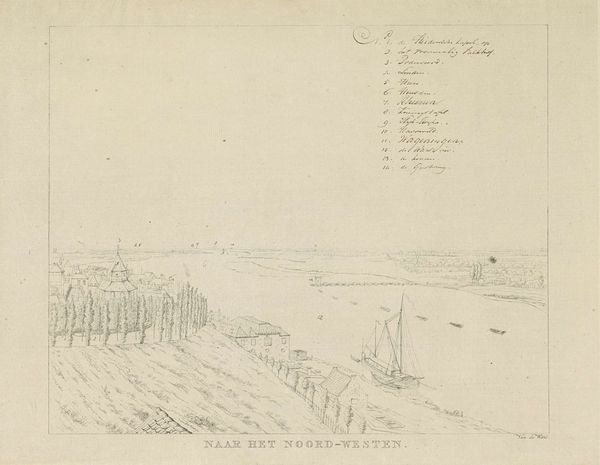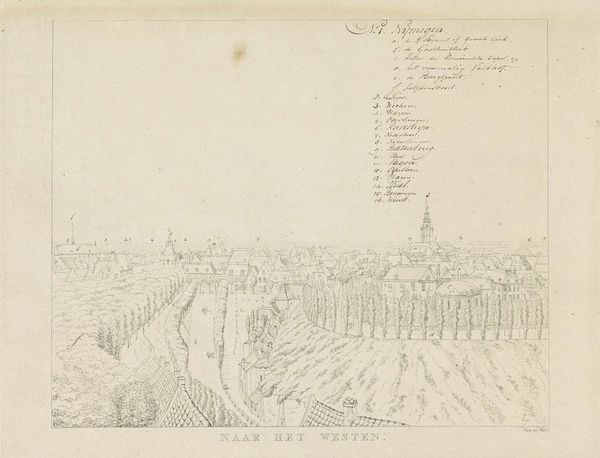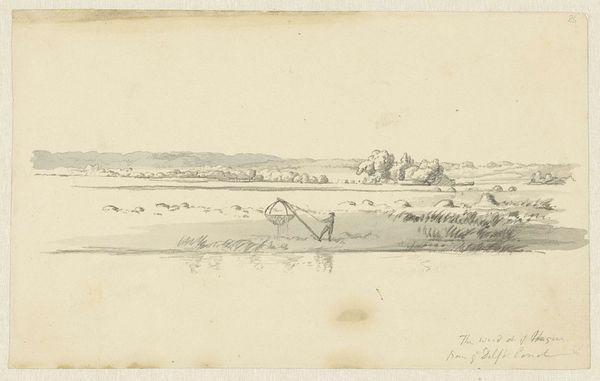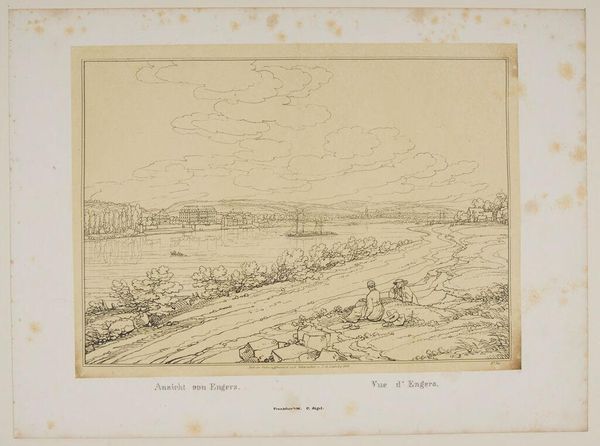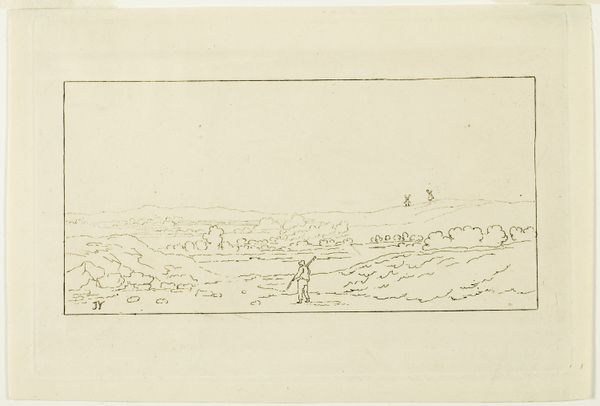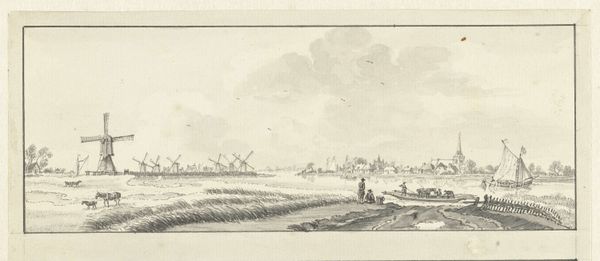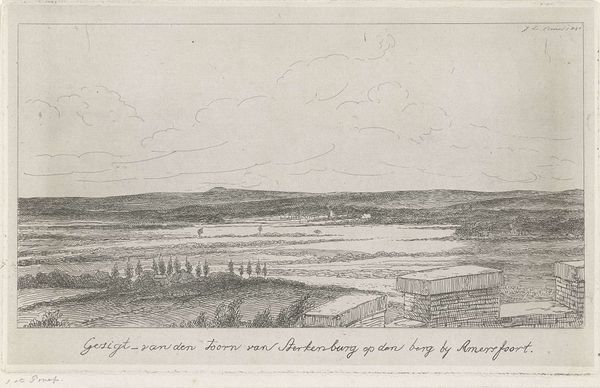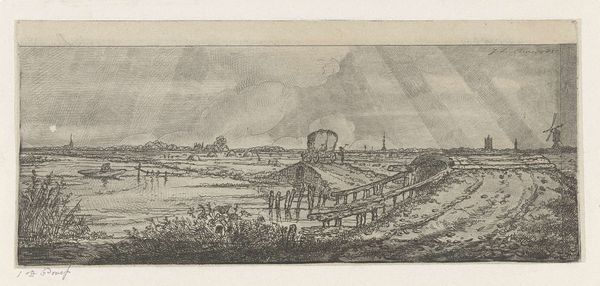
drawing, pencil
#
drawing
#
pencil sketch
#
landscape
#
romanticism
#
pencil
Dimensions: height 307 mm, width 396 mm
Copyright: Rijks Museum: Open Domain
Curator: This delicate pencil drawing offers us a panoramic "View of the Landscape East of Nijmegen," created between 1815 and 1824 by Derk Anthony van de Wart. What's your initial reaction? Editor: Bleak and open, wouldn’t you say? There’s something quite haunting about the almost surgical precision of the pencil marks delineating every tree, field, and building. You feel the expanse of land, the labor that carved and claimed this space. Curator: It is interesting that you use the word surgical, I felt quite similar when seeing the list written in very clear, well-organized manner, a series of symbols referring to locations across the plain...it adds a layer of symbolic ordering, this need to categorize, almost dominate, the natural world. It’s subtle but powerful, hinting at the Romantics’ ambivalent relationship with nature. Editor: Absolutely. It's more than just geographical record; the materiality speaks volumes. Pencil was relatively accessible at that time; its use points to a kind of surveying, perhaps sketching in preparation for something grander in oil. And this very act brings the land into an orbit of commodification. It ceased to be only land when depicted with such intent and pretense. Curator: I agree. The meticulous detail reinforces the concept of Romanticism—this interplay between awe and a quiet sense of dominion. The landscape almost becomes a reflection of the human soul. Editor: And a working soul, a laboring one! I see each line representing somebody’s hard work in fields, the felling of trees to make room for farms. Curator: What a perspective; you have moved it far away from just a pleasant land of leisure, I now agree more than ever with the almost 'haunted' aspect you have identified, those fields and paths become more and more a trace and symbol of an economy with lasting effects. Editor: Perhaps because, in the end, an artwork—even one about nature—is never divorced from the means that produced it and consumed it. We see not only beauty, but the evidence of work embedded within its frame. Curator: A stark yet lovely summary; thank you! Editor: Of course.
Comments
No comments
Be the first to comment and join the conversation on the ultimate creative platform.
